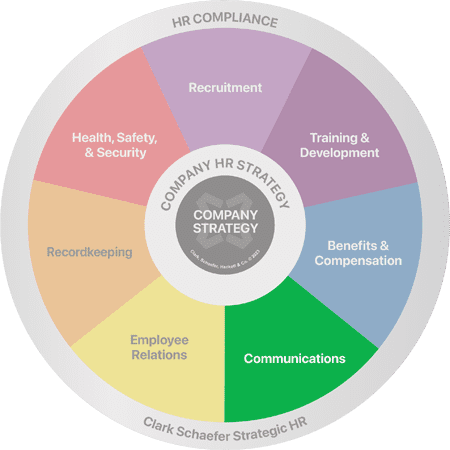Happy and Positive Thinking Is a Choice
Last Updated on July 19, 2021 / Communications
By Cathleen Snyder with Strategic HR
For many of us, the holidays bring times when we spend additional time with family that we might not normally spend. This can present joys as well as challenges. After the Thanksgiving holiday, several on our team were talking about some “interesting” interactions we may have had with some family members. Complaining or “quirks” (generously labelled) were often mentioned.
With this, I can’t help but think about my own approach to life in general. What do others think of me, after I’ve left the room? Do I add significantly more positive than negative? Am I the one that others have to tolerate?
While the holiday season may shine a spotlight from a family perspective, these issues also impact the work environment. How do my behaviors impact my work environment? Do I leave others feeling positive and uplifted, or down and negative?
Recently, in a company staff meeting, I did a presentation based upon Erika Oliver’s book, “Happy Crap”. She is an amazing, energetic speaker that I would highly recommend. Erika offers some wonderful insights of how the choices we make can impact daily life. We choose our thoughts, and our responses to certain prompts and situations. The quality of our thoughts, negative or positive, determines the quality of our experience and our lives.
As we go through life, the choices we make reflect assumptions we make regarding people, things and situations. Further, these assumptions impact how I feel, talk and act. According to Oliver, we have between 40,000 and 60,000 thoughts per day. Of those, 80% are negative! When we choose negative assumptions, i.e. traffic will be bad, I’m going to get yelled at, my customer will never be happy, this can’t help but impact how we approach our day.
It has been proven that the overall workplace attitudes impact the results of the business. Oliver says, if the prevailing attitude is negative, an announcement of a drop in revenue is met with doom. Conversely, a workplace that has a prevailing positive attitude is more likely to approach such news from a perspective of “what’s not working, and how can we fix it?” An overall sense of optimism, in the face of bad news, will help the team pull together and overcome these challenges. A positive or negative attitude can also impact Creativity, Competition, and Retention.
Bottom line, we have a choice. The quality of our thinking does make a difference. Our own actions, positive or negative, affect others’ attitudes and actions. Negative thoughts impair problem solving and communication skills. A positive approach to a problem will inherently result in others being more willing to help. Positive thinking is linked to decreasing depression, improving communication, enhanced creativity, increasing happiness, even losing weight.
We can change the choices we make, although it may not be easy at first. We may need to, literally, reprogram our responses. It may be uncomfortable, but realize it’s worth the effort when we consider how it impacts others.
Don’t get me wrong, no one expects that every day will be roses, unicorns and rainbows. We simply need to do enough to tip the balance to the positive. For some of us, this may mean reprogramming our default response to lean more positive than negative.
I encourage each of you to take a minute to do an honest self-assessment – How am I perceived by others? Do I have a positive impact on others around me and my work environment? Anything less than a resounding “Yes!” means there is some work to do.
Erika Oliver is definitely on to something. If we put more energy to a positive outlook than we do negative, the impact on our work environment can’t help but improve. We’ve all heard the buzzwords – culture, engagement, inclusiveness for all. It starts with some basics of a positive attitude. Our daily challenge is to ask ourselves, “How did I positively impact my work environment?”
References:
Oliver, E. (2011). Happy Crap. Portage: In The Affirmative Publishing.
Cathleen Snyder is the Director of Client Relations at Strategic HR If you have any questions or would like to share your comments, contact Cathleen@strategicHRinc.com.




